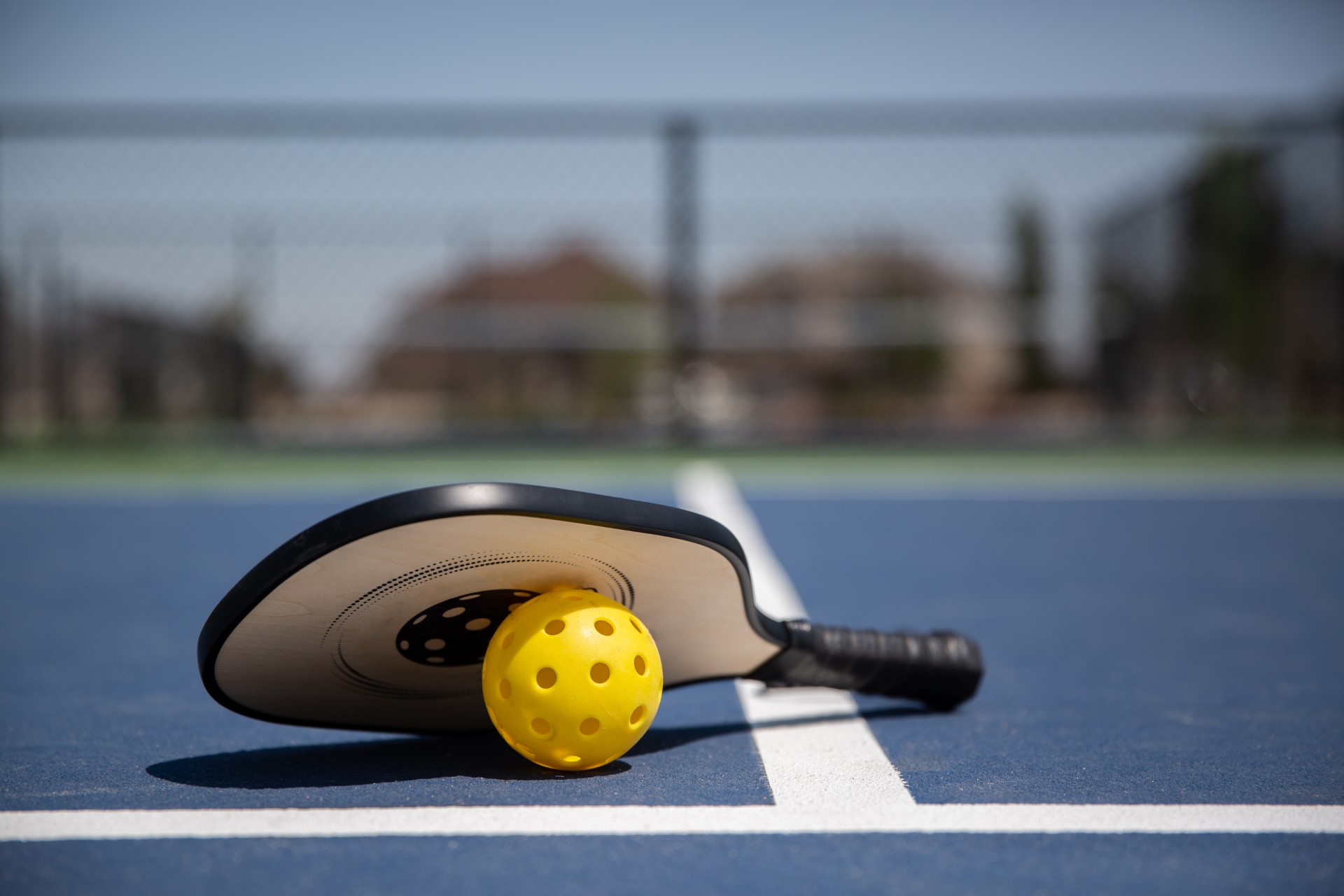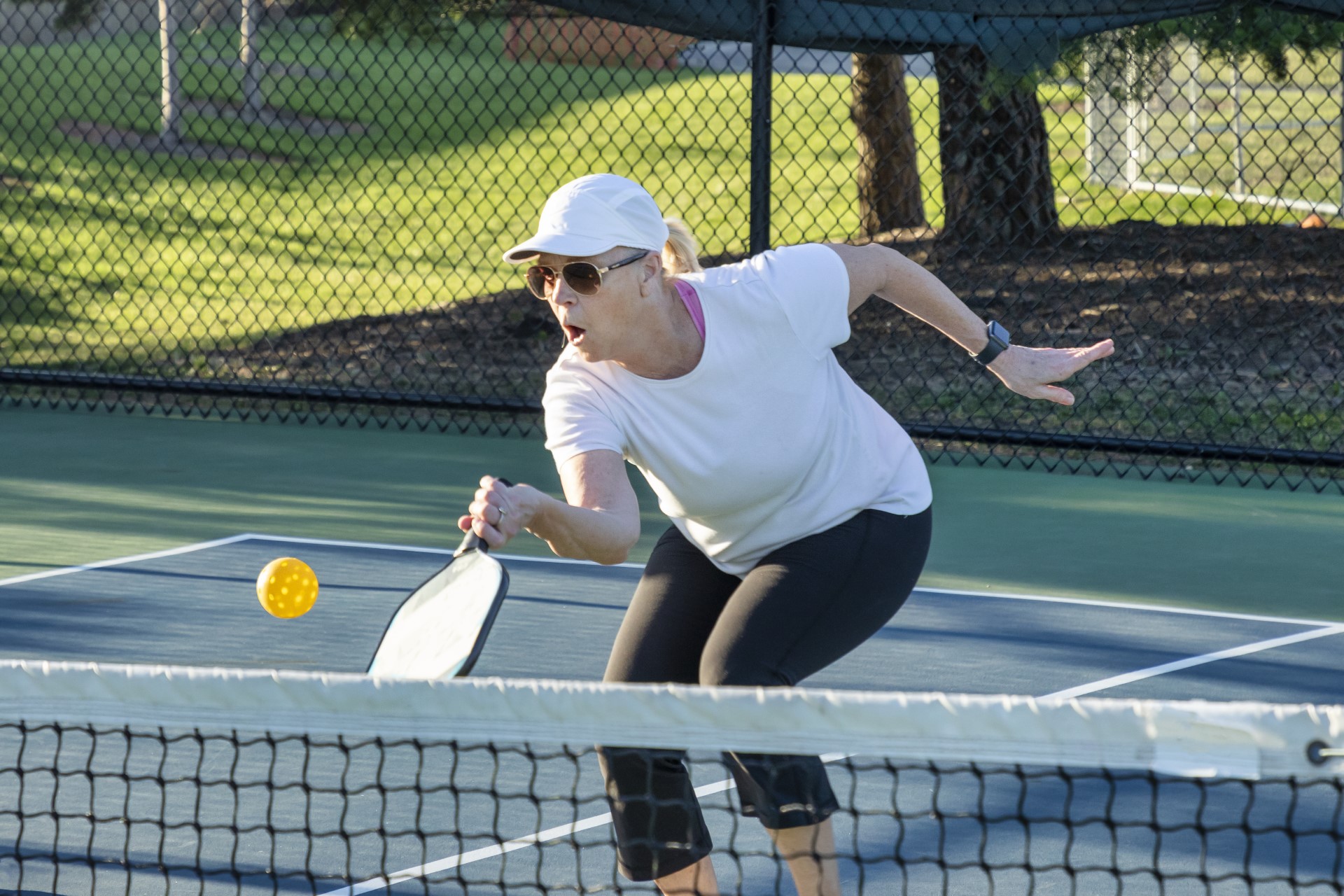The Pickleball Phenomenon
Pickleball is a popular new paddle sport being played throughout the Bay Area and across America. It combines elements of tennis, badminton, and ping pong, and is played on a court that is smaller than a traditional tennis court. Pickleball can be played either indoors or outdoors, as a singles or doubles game.

Pickleball is known for its accessibility and appeal to players of all ages and skill levels. It provides a good balance of strategy, hand-eye coordination, physical activity, and social interaction, making it a popular choice for both recreational play, and competitive tournaments.

As Pickleball grows in popularity, Pickleball injuries also grow more common. Even though played with what looks like a glorified ping pong paddle using a heavy-duty wiffle ball, it’s a sport that employs the same sudden stops, starts and directional changes of tennis. The principles of the strokes are the same, and so are the injuries that may result from overplaying, or not being in sufficient shape for your level of activity.
“I would suggest that anybody who’s taking up a new sport make sure they learn how to properly participate with good mechanics, as a lot of times, injuries can occur from poor mechanics and poor technique,” says Dr Semon Bader, a Golden State Orthopedics & Spine (GSOS) sports medicine specialist.
Some common orthopedic injuries that can occur in Pickleball include:
· Sprained Ankles: Rolling or twisting an ankle while making quick lateral movements is a common injury in sports like Pickleball.
· Knee Injuries: Injuries like ligament sprains (such as the anterior cruciate ligament, or ACL) and meniscus tears can occur due to sudden stops, starts, or changes in direction.
· Rotator Cuff Tears: The rotator cuff is a group of tendons and muscles that stabilize the shoulder joint. Overhead swings and repetitive arm movements in Pickleball can lead to rotator cuff tears.
· Tennis Elbow or Golfer’s Elbow (Lateral or Medial Epicondylitis): This injury affects the tendons on the outside of the elbow and can result from repetitive gripping and swinging motions. However contrary to common belief most patients with these conditions don’t play tennis, or golf, or pickleball.
· Wrist and Hand Injuries: Fractures, sprains, and strains can occur in the wrist and hand due to falls, collisions, or repetitive motions.
“We’ve seen a big increase in ruptures of the Achilles tendon over the last couple of years,” says Dr Joseph Kou, a foot and ankle specialist at GSOS. “Achilles ruptures tend to occur in sports that involve sudden quick movements, particularly if you are above the age of 30. The pickleball demographic is the perfect storm for Achilles ruptures. If you feel a sudden pop on the backside of your leg or it felt like ‘someone kicked you from behind’, make an appointment to see us urgently as it is highly likely you have ruptured your Achilles.”
“I believe a lot of these injuries can be prevented through proper warm-up and stretching prior to engaging in the activity,” says Dr Ross Talarico, podiatrist at GSOS. “Achilles tendon ruptures generally require surgery, and the recovery can be six months to one year before returning to the same level of play.”
Treatment for minor injuries typically involves:
· Rest, ice, compression, and elevation (RICE)
· Nonsteroidal anti-inflammatory Drugs (NSAIDs)
· Immobilization using a brace or splint if necessary
· Physical therapy may be recommended to restore strength and stability
Please see your doctor for a professional evaluation if:
· Your pain is severe
· You have significant swelling/bruising/warmth/redness
· Your joint feels unstable or cannot bear weight
· You have limited range of motion
Sometimes surgery may be necessary depending on the severity of the injury. Your doctor will perform a thorough evaluation, provide an accurate diagnosis, and recommend appropriate treatment options. Prompt medical attention can help prevent further damage and promote faster recovery.
Play safely and enjoy your game!




